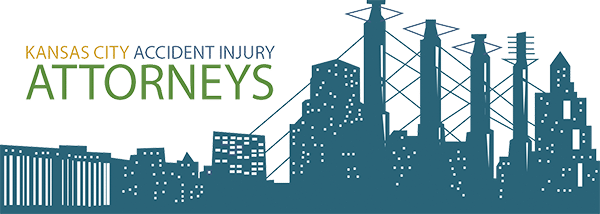Avoiding Blind Spot Accidents with Motorcycles
 Most of us likely learned about blind spots when getting our licenses. In driving courses, it is one of the first things you learn. In a passenger vehicle (like a sedan), you learn to check your mirrors and to look over your shoulder when changing lanes. In trucks, there are “no-zones” that surround the large vehicle.
Most of us likely learned about blind spots when getting our licenses. In driving courses, it is one of the first things you learn. In a passenger vehicle (like a sedan), you learn to check your mirrors and to look over your shoulder when changing lanes. In trucks, there are “no-zones” that surround the large vehicle.
Blind spots are not restricted to just larger vehicles, but also apply to motorcycles as well. Motorcyclists have different responsibilities and requirements in order to make sure their paths are clear on the road. Ignoring your blind spots is a dangerous mistake, often leading to often serious or even fatal accidents.
Where are the blind spots for cars and larger vehicles?
Blind spots for cars vary based on many factors, such as the make and model of the car, the height of the car, and any features on the car that may hinder your view such as thick windshield pillars. It is important to understand your car’s specific blind spots and learn to check them when driving on the road with other vehicles.
The blind spots on most sedans are usually the areas to the sides of your car that can’t be seen in your rear mirror or side mirrors. When changing lanes or merging, you will want to check all of your mirrors and then look over your shoulder to make sure no one is in the blind spot in the lane you want to merge into.
Larger vehicles such as trucks and recreational vehicles generally have larger blind spots than the average car or SUV. The blind spots range along the sides of the vehicle and outward, directly behind it, and directly in front of it. A good rule of thumb is if you cannot see the truck driver’s face in their side-mirror, then they cannot see you.
Where are the blind spots for motorcycles?
A motorcycle’s blind spot areas will also vary depending on the make and model, and the sort of mirrors it has. As with other vehicles, motorcycles have blind spots to their sides and directly behind them, with some slight variations.
If you are a motorcyclist, you should always check your mirrors and your blind spots. However, you should always be careful when attempting to look over your shoulder. If you are traveling at high speeds or near other vehicles, looking over your shoulder can be extremely dangerous. You might want to install blind spot mirrors for added protection, since motorcycles don’t come equipped with detection systems like many cars do.
When do blind spot accidents happen?
Most blind spot accidents involving motorcycles occur when a rider or other driver is:
- Changing lanes
- Moving from a stationary position
- Turning left or right
- Slowing down
- Stopping
- Overtaking another vehicle
Being aware of your blind spots in these moments can save not only your life, but the life of drivers around you.
What are the most common blind spot motorcycle accidents?
Motorcycle riders can be critically injured in the following accidents caused by blind spots:
- Sideswipes. Sideswipes often occur when a car is merging into another lane and hits a car or vehicle next to it. At a high speed, a sideswipe collision can knock a motorcycle into another lane of traffic, or cause the rider to fall.
- Reversing accidents. A person driving a taller vehicle – like an RV, SUV, or truck – may not see a motorcycle rider passing behind him or her. This type of collision can be fatal, as the rider may get stuck under the other vehicle.
- Turning accidents. Semi-trucks usually have a “wide turn” sign on them to warn other drivers, but all vehicles of all sizes are dangerous when turning. A motorcycle rider who attempts to slip past a turning vehicle can be crushed or knocked over. Likewise, vehicles turning at intersections may not see a rider who is traveling next to them.
- “Dooring” accidents. These occur when a driver opens his or her door into the roadway and accidentally hits a rider (or the rider hits the door).
- Multi-vehicle crashes. These are among the most complex types of collisions there are. If a motorcycle rider is knocked into another lane, or if he or she swerves to avoid a crash, other vehicles may be hit. Other drivers may slam on their brakes or swerve. Any of these conditions can lead to a chain-reaction crash that causes multiple injuries.
Motorcycle riders are at greatest risk of injury or fatality in any type of accident. They lack the protection that a steel cage provides, which means they are more likely to suffer brain trauma (even with a helmet), crushed and broken bones (like ribs, legs, arms, and sternums), and internal organ injury.
If you have been in an accident with a car or motorcycle because they failed to check their blind spot, then you deserve compensation for their negligence. Treatment for your injuries can put you thousands of dollars in debt, cause you to lose your job, and may cause conditions that affect you the rest of your life. Don’t pay for someone else’s mistake. If this is the case for you, our motorcycle accident attorneys at Kansas City Accident Injury Attorneys can help you file a lawsuit so that your life won’t be affected more than necessary. To schedule an appointment call 816-471-5111 or fill out our contact form. We offer free consultations at our office in Kansas City, MO. We also maintain offices in Lee’s Summit, Parkville, and St. Joseph, MO and in Olathe and Overland Park, KS.

Kansas City personal injury attorney James Roswold of Kansas City Accident Injury Attorneys handles cases dealing with victims of personal injury, medical negligence, wrongful death, workers compensation, nursing home negligence, premises liability, product liability, car accident, truck accident and motorcycle accident cases.

